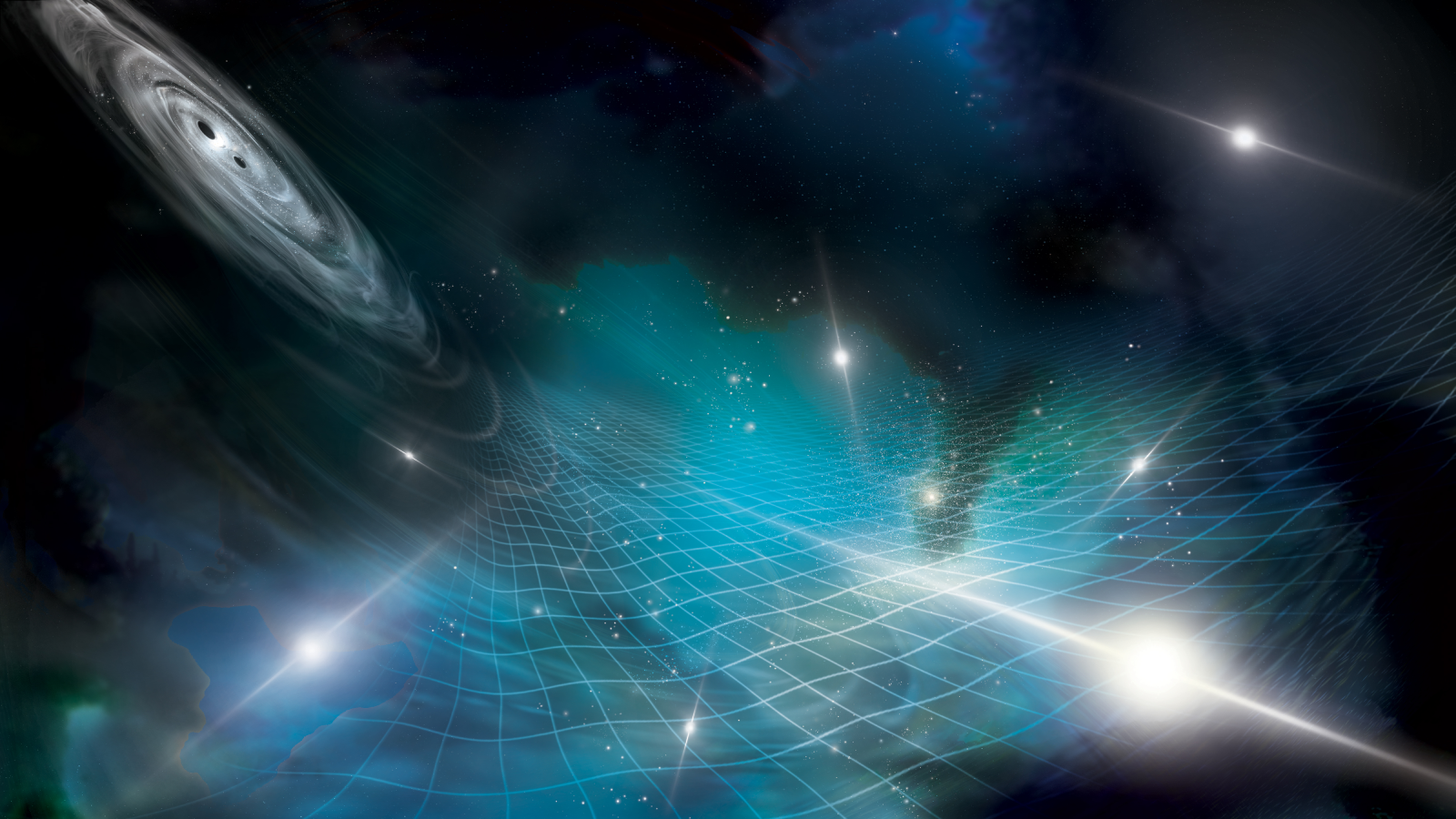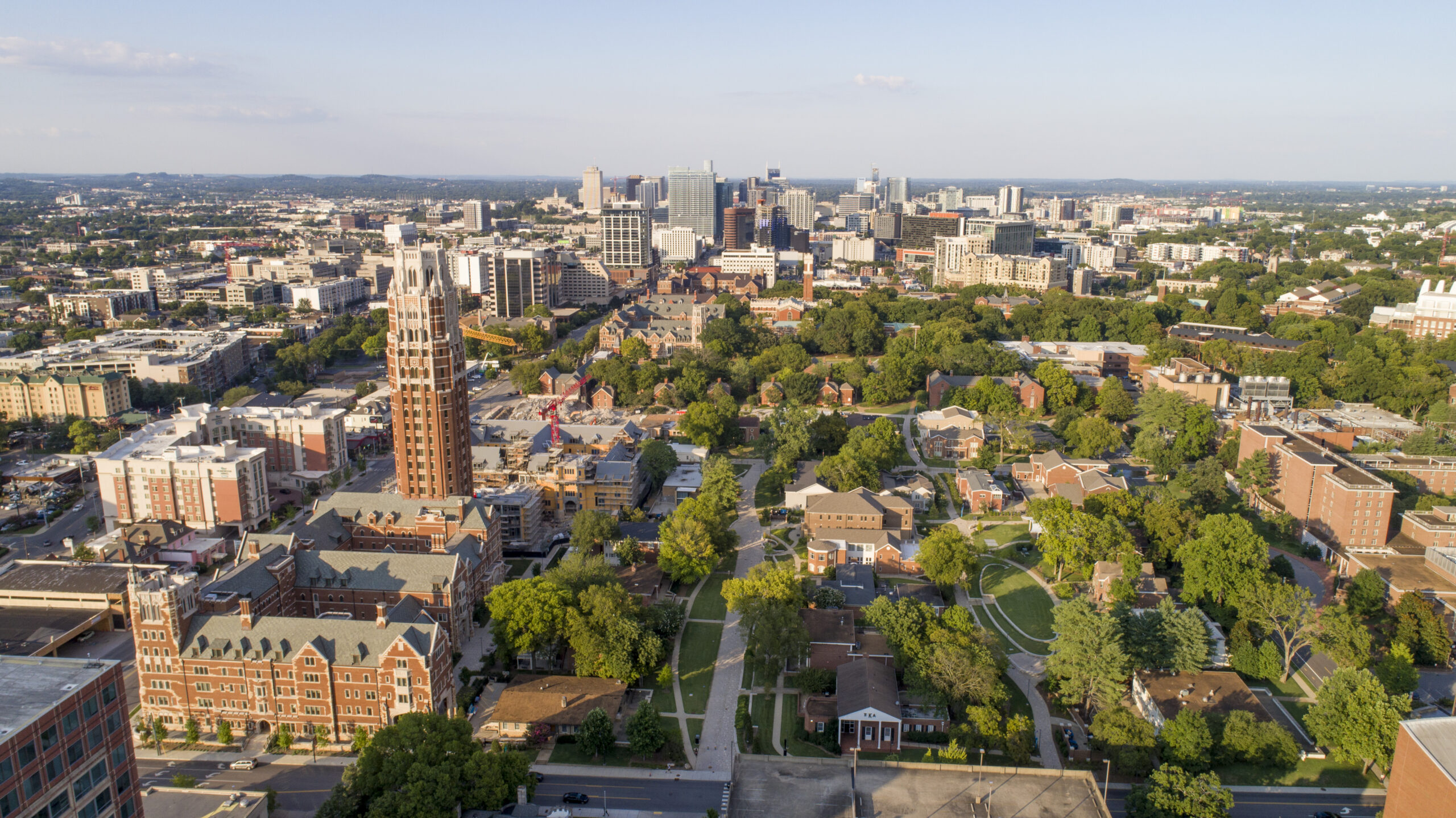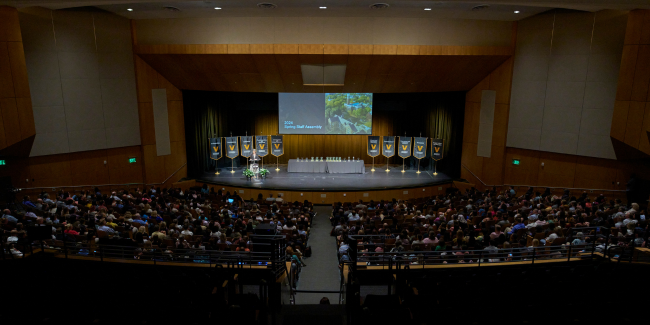Hunting for black holes sounds like the premise of a new Hollywood blockbuster, but at Vanderbilt University, Assistant Professor of Physics and Astronomy Karan Jani works with students in a lab to do exactly that.
Last year, Jani’s group at the Department of Physics and Astronomy, along with the university’s Data Science Institute, jointly launched the AI for New Messengers postdoctoral fellowship. The fellowship, one of the first of its kind in the U.S., seeks to apply AI techniques to analyze data from cosmic events (such as black hole collisions) using information from the Nobel Prize–winning Laser Interferometer Gravitational-Wave Observatory (LIGO) experiment.
The program’s inaugural fellow, Chayan Chatterjee, has already made significant breakthroughs. His work using deep learning to analyze gravitational wave data has resulted in two groundbreaking papers, both of which have been published in The Astrophysical Journal—a top peer-reviewed publication. This achievement is a major leap forward in the study of black holes and the development of AI technologies.
“The AI for New Messengers fellowship embodies Vanderbilt’s commitment to bold, interdisciplinary research,” said Provost and Vice Chancellor for Academic Affairs C. Cybele Raver. “Chayan’s groundbreaking work in black hole detection, combining AI and astrophysics, is a testament to our spirit of innovation. I’m excited to see how these discoveries will shape the future of science.”
Understanding gravitational waves
When massive celestial bodies like black holes or neutron stars collide, they send out gravitational waves—ripples in spacetime that carry vital information about the events. Predicted by Albert Einstein’s General Theory of Relativity in 1916, these waves eluded scientists until 2015, when LIGO made the first successful detection. This discovery opened an entirely new window into the study of the universe.
These gravitational waves are faint and difficult to detect, often buried under significant noise from Earth’s environment and the instruments themselves. Traditional methods rely on comparing wave data to a set of known signal templates, but this approach has its limitations. It can miss complex waveforms, especially those from collisions involving intermediate-mass black holes that are between 100 and 10,000 times the mass of the sun.
These complex features in gravitational waves are akin to musical overtones—higher-frequency sounds that accompany a primary note. In black hole mergers, these overtones, known as higher harmonics, add richness to the signal and provide deeper insight into the dynamics of the event.
AI’s role in black hole detection
Recognizing the challenges in detecting and interpreting gravitational waves, Chatterjee used AI to tackle the problem. His model, Attention-boosted Waveform Reconstruction (AWaRe), uses deep learning to reconstruct the signals from black hole mergers, including those elusive higher harmonics.
Chatterjee’s paper titled “Reconstruction of Binary Black Hole Harmonics in LIGO Using Deep Learning” explained the development of AWaRe to accurately reconstruct the detailed waveforms of colliding spinning black holes, including higher-order modes. These features are often missed by traditional methods of discovery but provide valuable insights into the nature of binary black holes and the dynamics of their mergers.
The second paper, “Navigating Unknowns: Deep Learning Robustness for Gravitational Wave Signal Reconstruction,” extends the previous work by highlighting the model’s versatility in detecting gravitational waves it hasn’t been trained on. AWaRe’s ability to identify unknown signals marks a significant step forward in gravitational wave astronomy, allowing researchers to explore new cosmic phenomena.
Both papers have attracted widespread attention in the astrophysics community.
AI and astrophysics at Vanderbilt
Vanderbilt’s new fellowship program is a testament to the university’s commitment to interdisciplinary collaboration. Jani and Professor Jesse Spencer-Smith, director of the Data Science Institute, both emphasize the synergy of AI and astrophysics.
“It all started at a faculty assembly, when Professor Spencer-Smith and I crossed paths and began discussing the exciting frontiers of our respective fields,” Jani said. “At that moment, we realized something remarkable—the ‘chirps’ made by a pair of black holes aren’t so different from how AI models like ChatGPT learn language. But instead of human language, it’s the language of the universe itself. This shared insight sparked what would become a groundbreaking collaboration.”
This interdisciplinary effort is providing students and researchers at Vanderbilt with unprecedented opportunities to work on cutting-edge research at the intersection of AI and astrophysics. More than eight data science majors are working on LIGO data, and the collaboration is expected to grow as Vanderbilt expands its research efforts with the upcoming Connected Computing College.
Chatterjee echoed this sentiment, saying, “I was particularly excited about the opportunity to work in an interdisciplinary environment, combining my expertise in gravitational waves with advanced data science techniques. I was eager to join Vanderbilt’s vibrant research community and take advantage of the exceptional resources and opportunities the university offers.”
Real-world applications and broader impact
Beyond revolutionizing black hole detection, the methods developed in Chatterjee’s research have broader applications. According to Spencer-Smith, the AI techniques used to analyze LIGO’s gravitational wave data can be applied to other fields, such as medical diagnostics, human speech models and even EEG analysis.
“The work we are doing in collaboration with Karan Jani and Chayan Chatterjee not only moves forward the field of astrophysics but also moves forward the state of the art of AI,” Spencer-Smith said. “The approaches and techniques we are exploring will find broad applications to other fields. For example, the analysis of the LIGO waveform data has encouraged us to start a parallel project on new ways of learning on general waveform data.”
As gravitational wave detectors continue to improve and capture more cosmic events, AI-driven models like AWaRe will be essential for processing the massive influx of data. With LIGO expected to detect an increasing number of black hole collisions, the ability to accurately and efficiently analyze this data will become more crucial.
Looking ahead: A new frontier in astrophysics
Vanderbilt’s AI for New Messengers fellowship is just the beginning. As the field of gravitational wave astronomy grows, so will the need for innovative methods like AWaRe. The interdisciplinary combination of AI and astrophysics is paving the way for discoveries that could reshape our understanding of the universe.
“Vanderbilt’s chancellor once remarked, ‘The walls here are thin,’ and this collaboration proves it—such a groundbreaking partnership could only happen in a place where disciplines seamlessly intersect,” Jani said. “The scope and success of this program will be bolstered even further with the new Connected Computing College, solidifying Vanderbilt’s place at the forefront of interdisciplinary innovation in multi-messenger astrophysics and data science.”
And Chatterjee’s work is far from over. “Currently, I am collaborating with students and researchers from the Fisk-Vanderbilt Bridge Program and the Data Science Institute to develop a gravitational wave data analysis software pipeline based on state-of-the-art large language models,” he said. “This is an exciting and innovative project with the potential to address many technical challenges in this field and facilitate new discoveries. The integration of these advanced AI models could revolutionize how we analyze and interpret gravitational wave data.”



